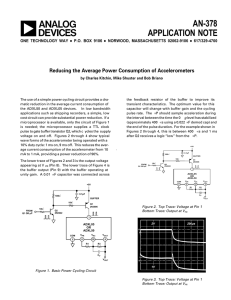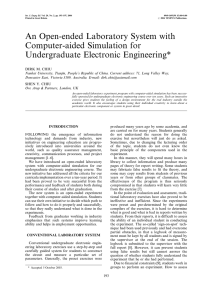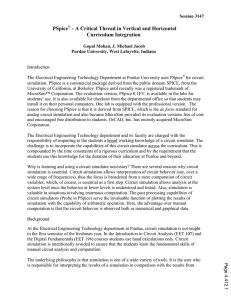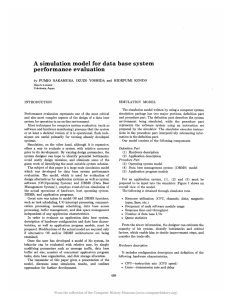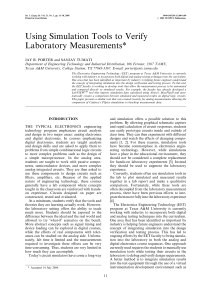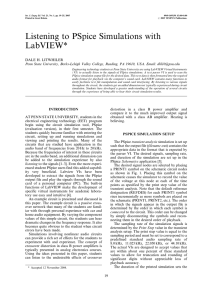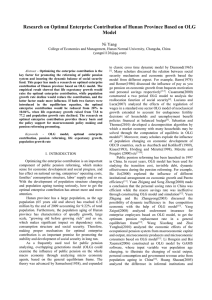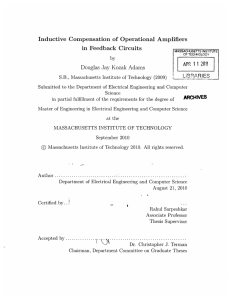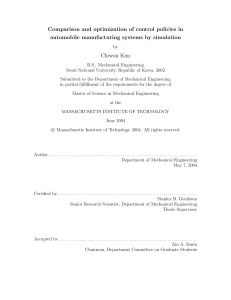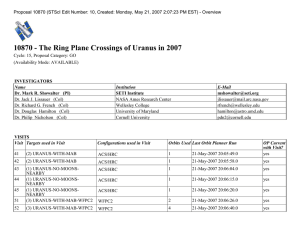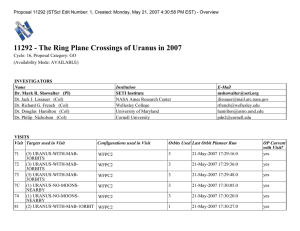Lab #8 in this note.
advertisement
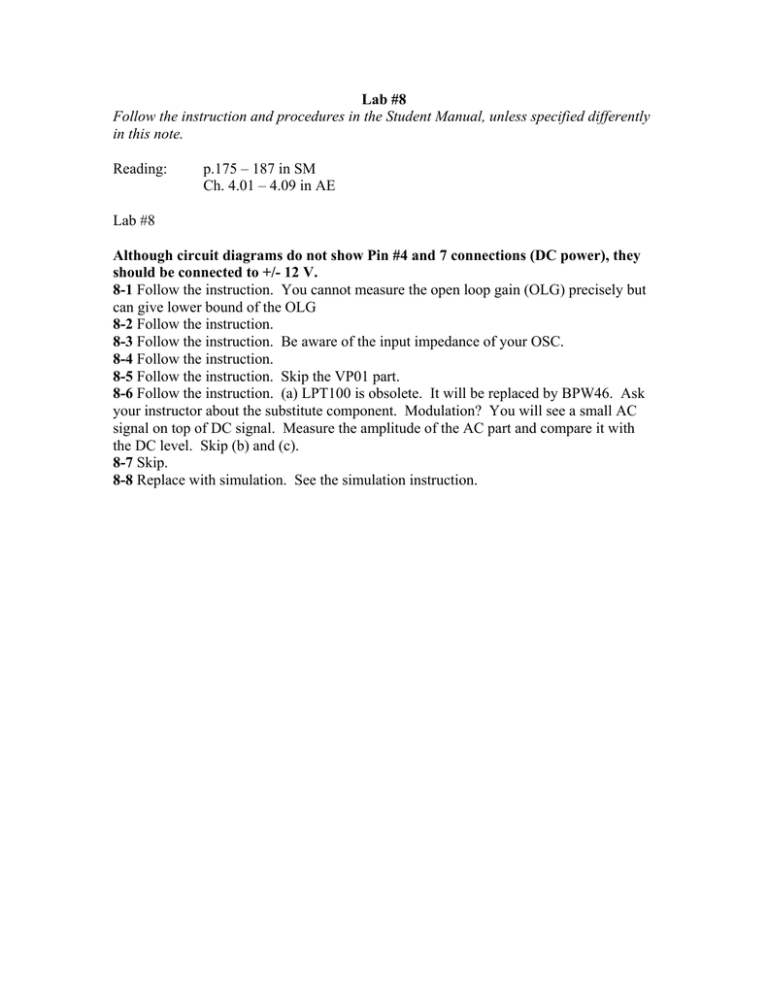
Lab #8 Follow the instruction and procedures in the Student Manual, unless specified differently in this note. Reading: p.175 – 187 in SM Ch. 4.01 – 4.09 in AE Lab #8 Although circuit diagrams do not show Pin #4 and 7 connections (DC power), they should be connected to +/- 12 V. 8-1 Follow the instruction. You cannot measure the open loop gain (OLG) precisely but can give lower bound of the OLG 8-2 Follow the instruction. 8-3 Follow the instruction. Be aware of the input impedance of your OSC. 8-4 Follow the instruction. 8-5 Follow the instruction. Skip the VP01 part. 8-6 Follow the instruction. (a) LPT100 is obsolete. It will be replaced by BPW46. Ask your instructor about the substitute component. Modulation? You will see a small AC signal on top of DC signal. Measure the amplitude of the AC part and compare it with the DC level. Skip (b) and (c). 8-7 Skip. 8-8 Replace with simulation. See the simulation instruction. 8-8 Push Pull Buffer The figure above is the schematic for Push Pull Buffer Part 1: Simulate the circuit above using PSpice. Part 2: Compare the output of the OP-AMP to the output of the Push Pull Buffer. Which one has less distortion? Part 3: Vary the frequency of the input voltage between 100 and 500 hertz. What happens to the “shape” of the output? Does it sound better? (int: in the simulation add a no-print delay of .5 seconds. Part 4: Form the feedback from the actual output of the circuit (from the top of R4) rather than out put of the OP amp. Do you see the difference?
